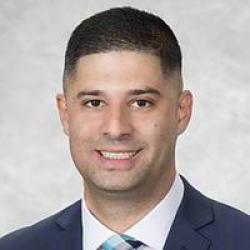If pain or injury is keeping you from doing what you love, you’re not alone. Whether it’s a sore knee that won’t heal or a lingering tendon issue, finding the right treatment can be frustrating. That’s where platelet-rich plasma (PRP) therapy comes in. This innovative, nonsurgical approach is helping people get back to their favorite activities by using their body’s own healing power.
Ashkan Alkhamisi, MD, a board-certified, fellowship-trained sports medicine physician with HonorHealth Sports Medicine, explains how platelet-rich plasma injections can reduce pain, support healing and help you move forward with confidence.
Could platelet-rich plasma be right for you?
Whether you’re just starting treatment or still struggling after cortisone shots, gel injections, physical therapy or braces, platelet-rich plasma could be a great option. Collegiate and professional athletes may want to try platelet-rich plasma first since their jobs and livelihood depend on their ability to perform. However, you don’t need to be an athlete to be eligible for these treatments.
“I often recommend platelet-rich plasma for active people, ages 10 and up, who want to get back to doing what they love,” says Dr. Alkhamisi. “If other treatments haven’t worked and you’re hoping to avoid surgery, this could be the next step.”
One thing to keep in mind: Platelet-rich plasma isn’t covered by insurance because it uses your own blood, which the FDA doesn’t regulate. However, the FDA does ensure that the centrifuge equipment and kits that are used meet certain quality and safety standards.
What to expect
Unlike cortisone or gel shots, platelet-rich plasma doesn’t offer instant relief — and that’s actually a good thing. It’s not just masking pain; it’s helping your body heal. You might feel a bit sore after the injection. That’s completely normal — and usually a sign that healing has begun.
“The results from platelet-rich plasma tend to last much longer than most other treatments,” says Dr. Alkhamisi. “It takes time, but it’s worth it.”
While it may not reverse arthritis or fix a completely torn tendon, platelet-rich plasma can be highly effective for partial tears, inflammation and chronic injuries.
Healing, step by step
After treatment, your body goes through three stages of healing:
1. Vascular inflammation (first few days up to two weeks)
You may feel the most soreness in the first 48 hours. That’s your body increasing blood flow and clearing away damaged tissue — an essential first step.
2. Tissue repair/Proliferation (One to eight weeks)
Your body starts building new tissue. How you move and care for the area during this phase can really impact your recovery.
3. Remodeling/Strengthening (One to three months)
The new tissue strengthens and becomes more organized. This is when you’ll start to feel stronger and more mobile.
Most people feel better within six to 12 weeks depending on the location. Additionally, you may only need one to three injections.
Other natural healing options
Platelet-rich plasma is just one of several innovative ways to treat pain and injuries. Other options include:
- Orthobiologics – An innovative therapy using biological materials found naturally in your own body (platelet-rich plasma, bone marrow, adipose and fat tissue).
- Extracorporeal shockwave therapy – A noninvasive treatment that uses high-energy sound waves to promote healing
- Needle tenotomy – A ultrasound-guided procedure which helps cut and remove damaged tendons using ultrasonic energy and a small incision
How to help your body stay strong and injury-free
Recovery is important — but so is prevention. Here’s how to give your body the best shot at staying healthy:
- Choose activities that match your fitness level
- Stretch before and after workouts
- Eat well and stay hydrated — especially in Arizona’s dry heat
“Hydration is huge,” says Dr. Alkhamisi. “When you’re dehydrated, your risk for injury goes up. And don’t skip your cooldown stretches — your muscles and tendons need that time to recover.”
If you’re ready to feel better and get back in action, platelet-rich plasma could be the natural boost your body’s been waiting for.
Related content
No pain, all gain
When injury gets in the way, it’s more than pain — it’s missing out. Get back to the moments, movement and meaning you love with personalized, non-surgical care.
Game, set, match
Pickleball shouldn’t come with pain as part of the game. Whether you’re dinking or diving, we’ll help you stay strong, mobile and ready for the next match.
Healing in motion
You don’t need a trophy to deserve expert care. From chasing grandkids to chasing goals, we’ll help you heal and feel like yourself again.

